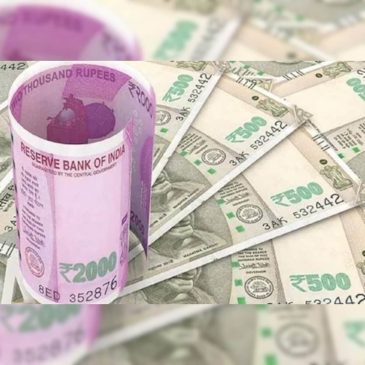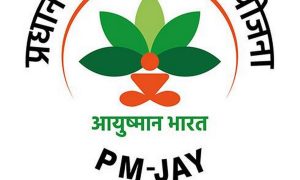Most Indian middle-class people expect to enjoy the finer things in life after retirement, but they have never prioritized saving for it.
Also Read– How to claim your TDS refund
We Indians are notoriously bad with money, which is perhaps why we avoid talking about retirement. Most of us have wasted a lot of time daydreaming about our retirement and freedom from the daily grind. When we think of a blissful retirement, we see ourselves relaxing and not having any obligations. When the time comes for us to retire, however, only a handful of us will be able to enjoy such a comfortable lifestyle.
India’s population of people aged 60 and older is predicted to reach 323 million by 2050, according to the World Population Prospects report published by the United Nations. This figure will be higher than the whole population of the United States in 2012. The importance of planning for one’s retirement years is growing as the social landscape shifts from joint to nuclear family structures. Most Indian middle-class people expect to enjoy the finer things in life after retirement, but they have never prioritized saving for it.
Read More:- Amid rising Home Loan rates, Andromeda’s loan distribution jumps 63% to Rs 60,000 crore in FY23
The retirement years are the crowning achievement of a lifetime of hard labour. But it’s difficult to accept that we don’t have a paycheck or other source of income anymore. We should therefore plan for retirement far in advance when it comes to our finances. These are a few things to think about.
A larger pension payment can be expected in retirement if one plays the long game. You don’t have to sacrifice your current quality of life in favor of long-term financial security. It necessitates making a conscious decision to be frugal with your money, when you save, invest, and spend. A well-rounded retirement strategy is as crucial as a healthy diet to ensure a happy and fulfilling later life. The 50/30/20 rule of thumb is a solid long-term budgeting guideline. The necessary expenses, such as a mortgage, rent, energy, and food, should receive 50% of the budget.
Also Read– 7th Pay Commission: Himachal Hikes DA By 3% For State Employees, Here’s How Much Salary To Increase
It is recommended that 30% of your income be spent on leisure activities such as traveling, shopping, and health care. It’s recommended that the remaining 20% be used toward retirement, savings, and investments. The lower your debt, the more money you have to put toward investments. Minimize your debt. Review your credit card bills for purchases made for shopping, entertainment, and vacation to see if any can be cancelled or decreased. See that your pension statements are in order. It’s possible you’ll want to beef up your retirement savings or start investing more for the long haul. Have enough cash on hand for unplanned expenses. Are you aware of the amount of money needed for your retirement? Use https://www.investonline.in’s retirement calculator to determine the amount you require to maintain your present lifestyle.
Read More:- India plans to turn airports into aviation hubs: Scindia
A few significant retirement planning strategies are listed below:
When income rises, so should the amount invested.
It’s crucial to pick an investment early on that will pay off in increments as needed throughout one’s life. Investment levels can be increased as the career trajectory progresses. When your income rises, you should always raise your investments.
As time goes on, we feel the effects of the rising expense of life in India. Thus, you should start saving and investing as soon as you can. If you start saving for retirement when you’re young, you’ll have more time for your money to grow and more money to withdraw when you retire.
Also Raed- Hair Care: Step-By-Step Guide To Use A Hair Mask And Conditioner For Healthy Manes
Putting a certain share of one’s income into one’s main retirement corpus is a sound strategy. It’s also important to avoid tapping into the corpus (the primary sum) before retirement.
When deciding on a retirement strategy, it’s important to think about inflation.
Investments should be made with the intention of growing them. Inflation has a significant impact on financial planning, and this fact must never be overlooked or minimized. If you want to avoid seeing a drop in your returns due to inflation, you need to be sure that you’re factoring in forecasts of future price increases while deciding on a strategy.
Also Read- Weight Loss Vs Fat Loss: What Is The Difference? Expert Shares 5 Ways To Lose Fat Quickly
Invest concurrently in health insurance and individual health care plans:
Due to the possibility that you won’t be in peak physical condition in your senior years, it’s important to begin saving early for a rainy-day fund. This safeguards your financial security by preventing any decrease in your savings or investment returns owing to unexpected medical costs.
However, here are some investment options for retirement planning:
National Pension Scheme
The National Pension System (NPS) is a government program with the goal of giving the working class financial stability. Participants might be any employee of a governmental or private organization. In addition, those working in the informal economy can also contribute to NPS. Employees will contribute to a pension fund on a periodic basis under this plan.
Also Read– Prevention of Blindness Week: Using gadgets for too long can damage your eyes
A portion of the corpus will be available for withdrawal at retirement, and the remainder will be distributed as a regular pension payment. The Income Tax Act of 1961 includes a tax deduction for NPS donations in Section 80C.
Public Provident Fund
Section 80C of the Income Tax Act of 1961 allows for contributions to the Public Provident Fund (PPF), a government-sponsored savings program. By investing in PPF, you can reduce your yearly tax liability by up to Rs 46,800. These accounts have a 15-year lock-in term and allow annual contributions of up to Rs 1,50,000. PPF investments provide a rewarding rate of return, making them a great tool for saving for retirement.
Also Read– COVID-19 In Kids: Itchy Eyes To Fever, 5 Major Symptoms Of Coronavirus To Look Out For In Summers
Mutual Funds
The rate of return on investments is among the most essential components of the process of wealth building. Mutual funds allow you to diversify your holdings across a wide range of asset categories, which could lead to higher returns. Equity has a proven track record of being the highest-performing asset class over the long term, according to historical statistics, and has the ability to generate wealth for investors over a lengthy investment horizon.
The Nifty 50 TRI, an index of India’s 50 largest stocks by market capitalization, returned 13% compounded annually over the past decade. For the past ten years, if you had been investing in Nifty 50 TRI regularly through a Systematic Investment Plan (SIP), you might have amassed a corpus of Rs 1.40 Crores with a monthly investment of Rs 55 thousand. If you had started saving 5 years earlier, you might have amassed Rs 3.4 Crores by putting away just Rs 55,000 each month under a Systematic Investment Plan (SIP).
Also Read– Amitabh Bachchan’s close family friend shares crucial update about actor’s recovery from rib injury
Retirement funds have posted decent performance over the longer term. For example, Tata Retirement Savings Fund has delivered 13.12% return in a 10 year period. Axis Retirement Fund which was launched in December 2019 has posted an impressive return of 9.43% in a 3-year period while Franklin India Pension Plan has delivered 11.19% returns in a 20-year period. In the short term, these funds might seem to underperform, but in the long run they have delivered impressive returns.





































